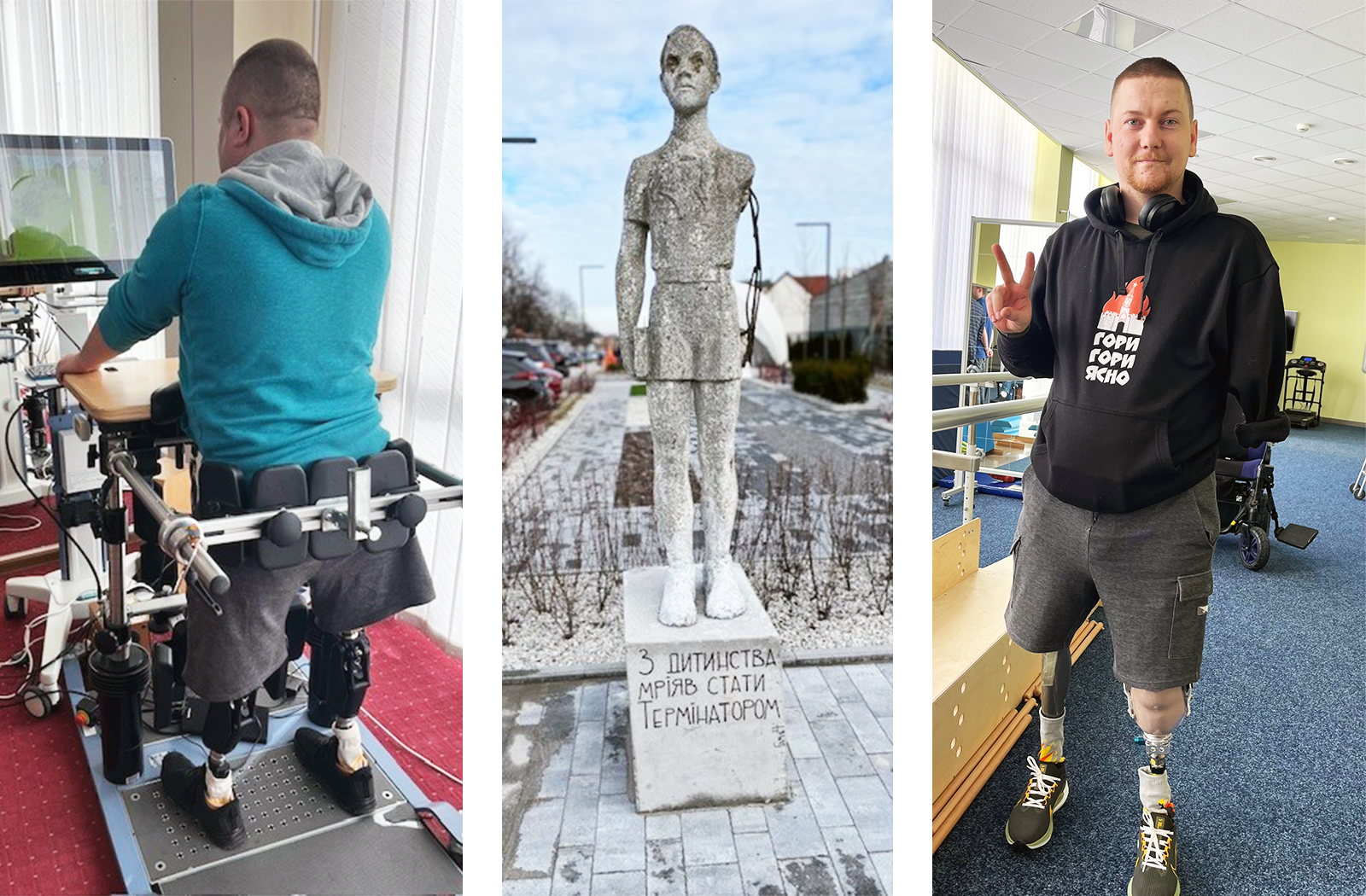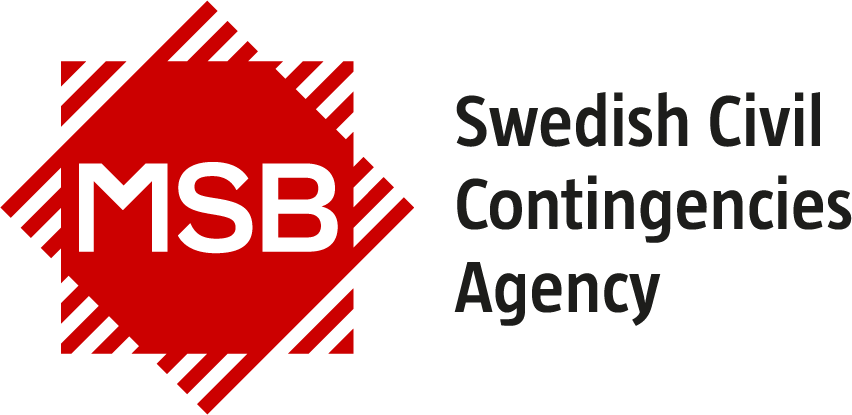Ms. Karin Fischer Liddles field story from Ukraine
MSB has seconded a team with different expertise personnel to work with United Nations Development Programme (UNDP), United Nations Office for Project Services (UNOPS) and Mine Action Programs (MAP) based in Kyiv, Ukraine. For me, it is the first time to work with Mine Action projects.

From left: 1) Double amputee, training balance. 2) Statue outside Superhumans rehabilitation center, Lviv. “Since my childhood I was dreaming of becoming a terminator.” 3) Max, injured in January 2023.
My name is Karin Fischer Liddle and I am a registered nurse by profession. I started working with humanitarian and development missions 28 years ago, and since then I have had the opportunity to work in many different organization, positions, projects and countries.
First, let me begin with sharing some information about the situation in Ukraine in regards to landmines and explosive ordnances (EO). As many of you know, it is not a nice picture. The contamination of landmines and other explosives covers an area of approx. 174,000 km2, which is nearly 29% of Ukraine’s total territory. Imagine if it would be the same situation in Sweden, we would not be able to use almost 38% of Sweden's area. Ukraine is today one of the most mined countries in the world.
Great need for prosthetics
Besides the battlefield, mine accidents occur in residential areas, agricultural fields, roads, and forested areas, places that people visit frequent in their normal daily lives. The combination of an ongoing war and the continued spread of landmines and EO's has resulted in an enormous burden of persons needing prosthetics.
Last week I visited two rehabilitation centers in Lviv, one run by a private organization, Superhumans, and one run by Ministry of Social Affairs, Galychyna. They work under completely different circumstances. Superhumans dependent on private and institutional funding, though with a huge support base with big donors and famous people like Sting and Bear Grylls. Galychyna, being a governmental institution is dependent on government funds and occasional institutional funding.
My meeting with MAX
Despite the different means, they are both facing the tremendous burden of women and men with life-altering injuries needing rehabilitation and fitting for one or more prosthetics. During my visit at Galychyna I met Max, a 30-year-old TV-journalist. And being a journalist, he was happy for me to share his story.
Max was enrolled to the military on the second day of the Russian invasion, 25thFebruary 2022. Almost 1 year later, 21stJanuary 2023, he suffered multiple injuries during a battle in Donetsk region, and as a result he lost both his legs and left arm. He is still waiting for his final prosthetics, as are many of the men and women wounded in the battlefield or during daily life activities. The problems are multifaceted; there is a huge lack of skilled staff; prosthetics specialists, physiotherapist, occupational therapist, and social workers who can provide psychosocial support. To add to this, there is as well very difficult to find components and material for the prosthetics.
I asked Max what his goal for the future is, and for him it is to be independent, to be able to walk on his own without any support, and of course, to go back to work as a journalist again.
Other projects ahead
Besides the Victim Assistance projects, I am also, in collaboration with Folk High School Vovchok, working on reviewing State Emergency Services Ukraine (SESU), Medical Support Standard Operating Procedures (SOP) for Demining Operations. This project as well includes reviewing the first aid medical training for sappers (deminers). Assessments show that there is a need to standardize the trainings, so that everyone is treating an injury in the same way.
Lastly, the day I leave the mission in Ukraine, one of the things that I will take with me, are all the focused and determined faces I saw during my visits at the two rehabilitation centers in Lviv, determined to get their lives back, and to once again be independent!
